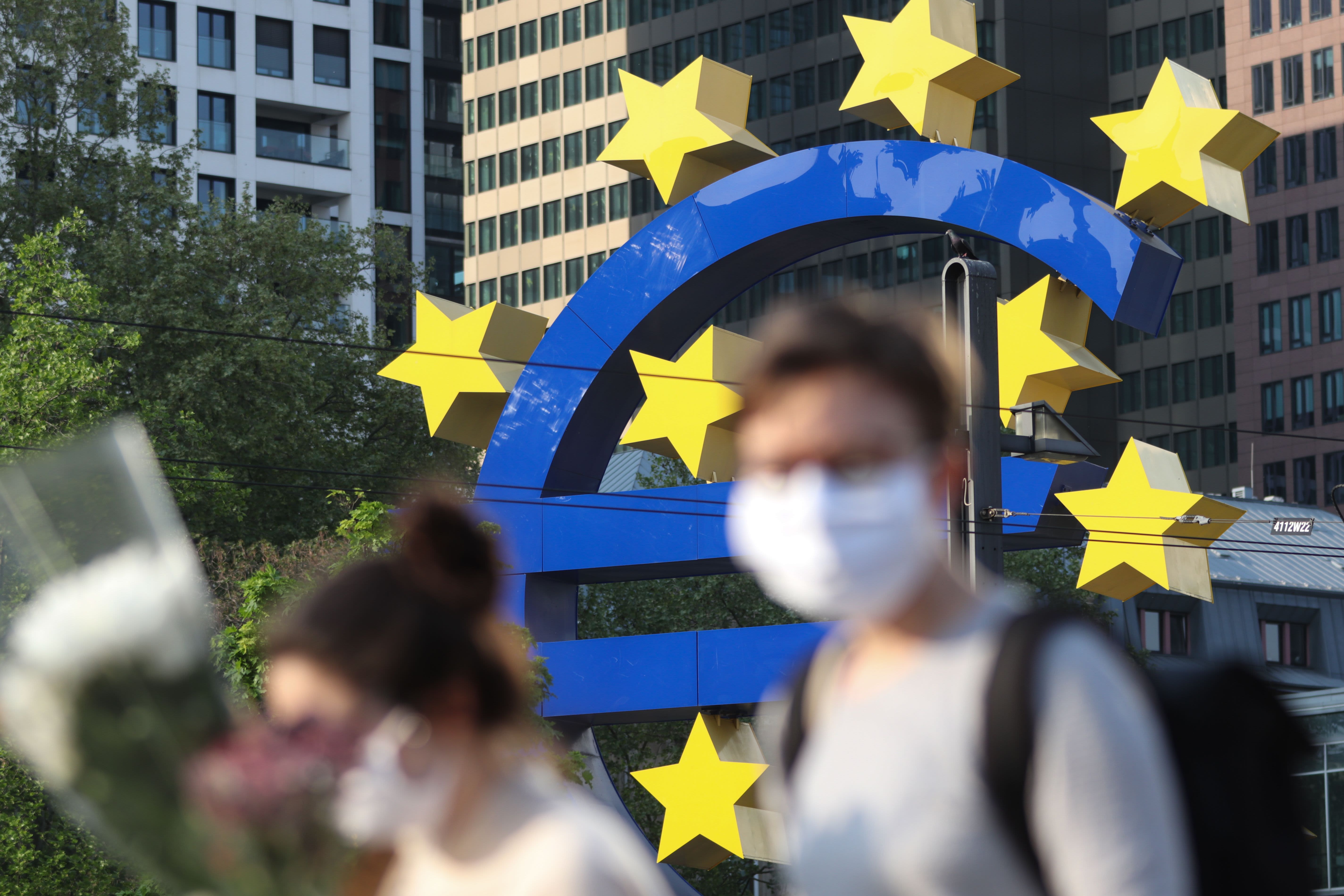LONDON — A substantial portion of investors expect the U.S. Federal Reserve and the European Central Bank to keep monetary policy slightly too loose for too long, according to a Deutsche Bank survey.
In a market sentiment survey of more than 600 investment professionals worldwide, conducted by the German lender between Oct. 6-8, 42% expected the Fed to stay slightly too dovish, while 24% anticipated that the central bank would get policy “about right” and 33% foresaw a more hawkish tilt.
The prospect of a dovish policy error from the ECB was seen as more likely, with 46% expecting policy to remain too accommodative, compared to 26% believing policy across the common currency bloc will be “about right” and 21% seeing a premature or excessive tightening.
By contrast, 45% see a bigger risk of the Bank of England making a hawkish policy error, compared to 20% for “about right” and 20% for dovish.
Central bank policymakers have been striking a cautious tone in recent weeks, seemingly adopting a “wait and see” approach to inflation and the prospect of hiking rates.
However, Bank of England Governor Andrew Bailey on Sunday gave the clearest hint yet that British interest rates could be hiked, telling a panel that the Bank “will have to act” on rising inflation.
ECB
Andrea Enria, chair of the ECB’s supervisory board, told the European Parliament’s Economic and Monetary Affairs Committee on Thursday that although the economic outlook has improved, “caution remains of the essence.”
“We are keeping a very close eye on the buildup of risks on bank balance sheets,” Enria said, adding that the ECB is also seeing a “build-up of residential real estate vulnerabilities in some countries.”
He noted that along with “deteriorating asset quality,” banks’ “excessive search for yield” was feeding growing demand for leverage, increasing market risk.
“A sudden adjustment in yields, triggered for instance by changing investor expectations about inflation and interest rates, could in this context cause asset price corrections and direct as well as indirect losses for banks,” Enria said.
At its September meeting, the ECB deferred a number of important decisions to December, but since then, surging energy prices have driven euro zone inflation to a 13-year high of 3.4% year-on-year, and analysts expect it to continue rising.
HSBC Senior Economist Fabio Balboni said in a research note Monday that although divisions are widening among the Governing Council, President Christine Lagarde will likely argue the case for retaining a highly accommodative stance at the October meeting.
“Our view remains that the December ECB forecast will still show inflation below 2% in the medium-term, paving the way for the ECB to announce a step-up of the ‘normal’ QE programme alongside the end of PEPP next March, and we think the first rate rise is still a long way away,” Balboni said.
“But with the risk that rising energy prices could prove more sustained and lead to second-round effects, the medium-term outlook for monetary policy has now certainly become uncertain. We expect some pushback against the market in October. The question is how forceful it will be.”
Bank of England
Meanwhile, the Bank of England will be tasked with balancing an overall expansion of economic activity against signs of a sharper deceleration in the third quarter, and increasing risks in the fourth.
U.K. GDP rose by just 0.4% in August, with July’s output revised lower to -0.1%. However, the weaker third-quarter growth follows an upward revision across the second to 5.5% annually from 4.8%.
“On the face of it, the marked slowdown in economic activity into Q3 should serve as a warning against too swift a tightening in monetary policy, particularly as GDP looks set to face ongoing headwinds from higher utility prices, cuts in Universal Credit [benefits support] and eventually increases in National Insurance all pressuring household incomes over what threatens to be a difficult winter,” said David Page, head of macro research at AXA Investment Managers.
Recent comments from Bank of England Governor Andrew Bailey about the effects of higher inflation expectations has led AXA to conclude that the Bank is lining up a pre-emptive tightening of policy.
“We change our forecast to envisage the first hike (0.15% to 0.25%) by the BoE in February next year,” Page said in a research note last week.
“We then consider a second in August (to 0.50%) and a third in May 2023 (to 0.75%). However, short-term interest rate markets consider a faster pace, including a first hike in December this year and almost fully pricing in a rise to 1.00% by end-2022.”
The Fed
Red hot inflation data has been a key source of speculation that the U.S. Federal Reserve may be forced to hike rates sooner rather than later. Minutes from the latest meeting of the Federal Open Market Committee indicated that the central bank could start tapering its monthly bond-buying from next month.
The U.S. consumer price index jumped 0.4% month-on-month in September and 5.4% year-on-year, according to Labor Department figures.
However, Richmond Fed President Thomas Barkin said last week that more economic data was needed before the Fed could start to consider rate hikes.
In an interview with CNBC on Friday, Barkin indicated that he is leaning toward beginning the tapering process in November, with growing inflation risks at the top of the agenda.
Fed officials have stressed that even after the start of tapering, it will be some time before interest rate hikes begin.
